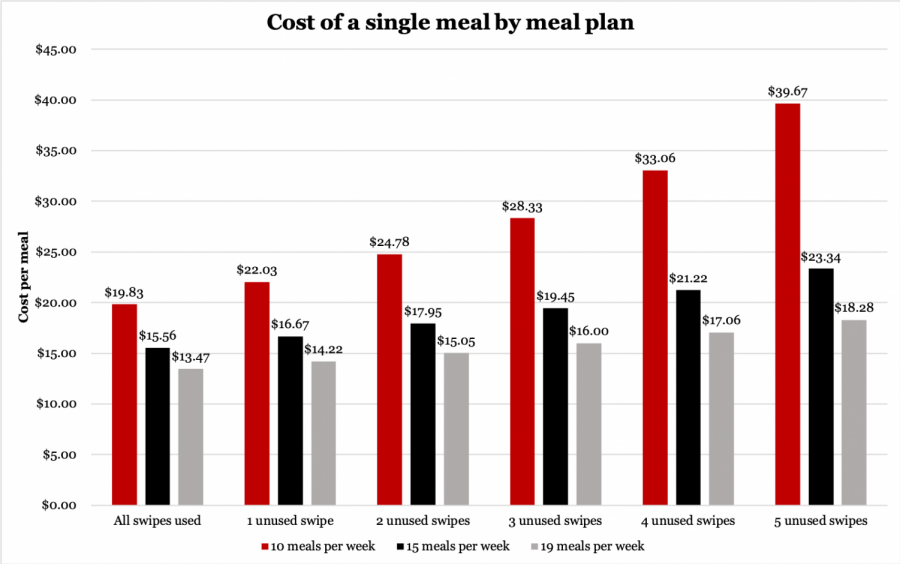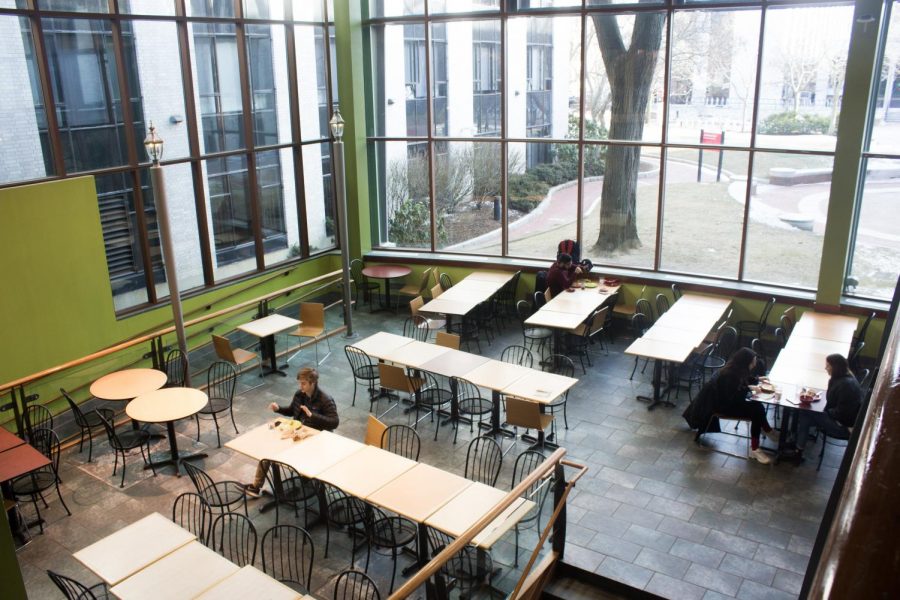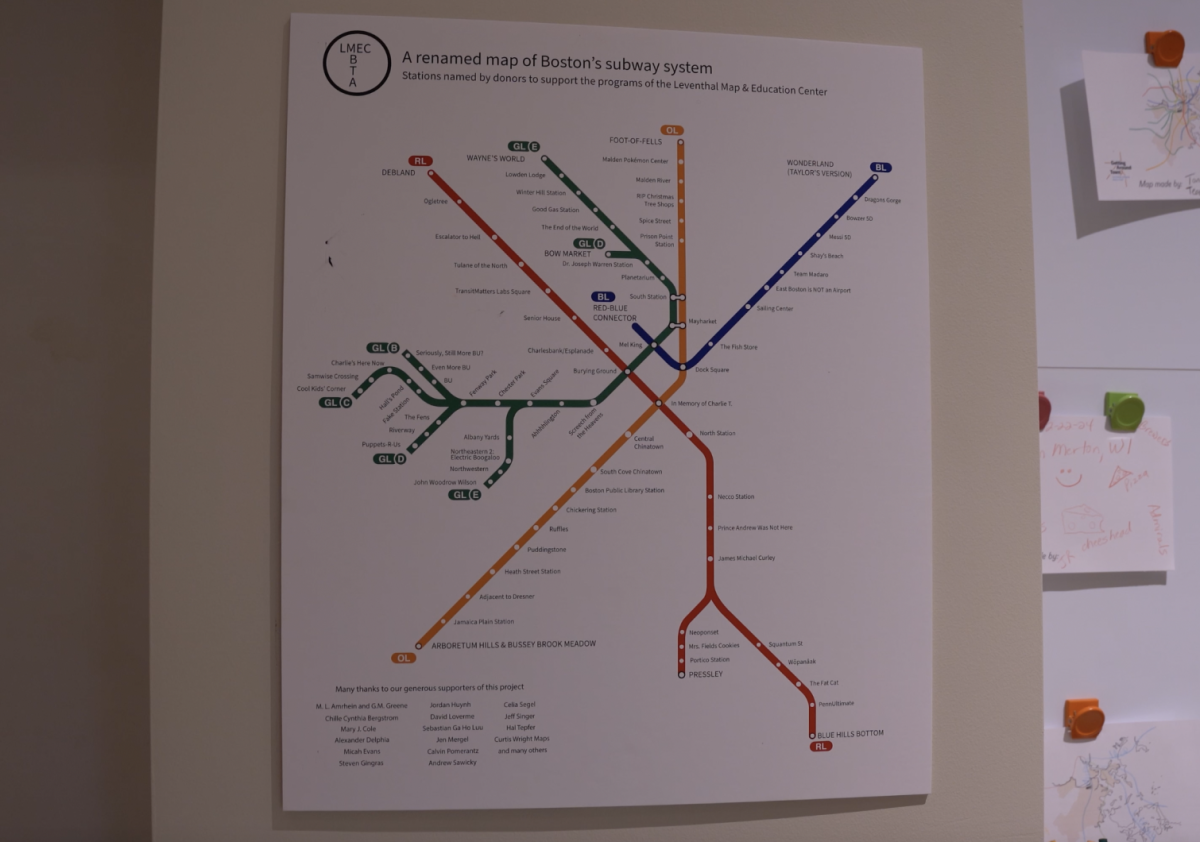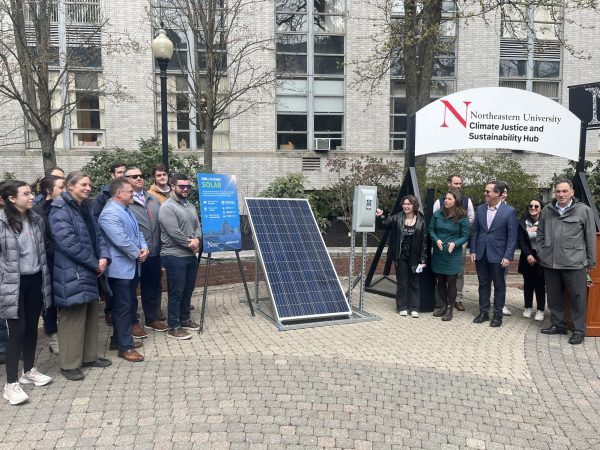Op-ed: Swipe2Care is good, but not a long-term solution
A few students lounge in a corner of one of Northeastern’s increasingly expensive dining halls.
February 12, 2019
I like Northeastern’s dining halls, but they are unfair and overpriced. We need a food system that increases affordability for students.
Northeastern offers three meal plans to students living on campus without a kitchen: 10, 15 or 19 meals per week. Students living in residence halls, International Village for example, must purchase at least the 10-meal-per-week plan. These plans cost $3,175, $3,665, and $3,970 per semester respectively. Northeastern’s fall semester runs for 15 weeks. These are steep rates even for eating out.
Worse yet, meal plans do not roll over from week to week. As of last year, the only way to get rid of unused swipes at the end of the week was to go to Outtakes, which offers a selection of snacks, drinks and pre-made meals from the dining hall.
Many dining halls across the country are expensive, but Northeastern’s meal plans are exceptionally pricey. For example, Boston College uses a mandatory unlimited meal plan system that costs freshmen $2,709 per semester, several hundred dollars cheaper than Northeastern’s plans.

There are several ways Northeastern could fix its dining system.
For one, it is absurd that students are forced to spend at least $3,175 per semester on food when many cheaper and likely preferable dining options are located within several hundred feet of most dorms. Qdoba, Amelia’s and Boston Shawarma are a couple minutes’ walk from several freshman residence halls.
Another good step would be lowering the cost of meal swipes. In a 2017 article, Money.com pointed out that labor and repair costs contribute to the high price of meal plans. Dining service providers must pay for staff wages and facility upgrades and repairs. These costs are integrated into the price of each meal. In theory, Chartwells, Northeastern’s dining service provider, should have slightly increased the price of each meal to account for the increased pay of the dining hall workers announced last year. But meal plan prices have not changed, indicating that meal prices are not dependent on workers’ wages.
Northeastern could also offer meal plans on a semesterly or yearly basis, instead of weekly. In these plans, students would be allotted a certain number of swipes per semester and could use their meals when they feel like it. This system eliminates the penalty for forgetting to use remaining swipes before the end of the week.
Last year, SGA and Northeastern attempted to patch up the university’s meal plan system with Swipe2Care. Swipe2Care is a mechanism that allows students to donate unused meal swipes to their peers who may not be able to afford enough meals. It’s not clear who does or doesn’t qualify to request meal swipes.
Initially, I loved the idea of Swipe2Care, but the more I understand how it works, the more it seems to entirely misdiagnose the problem with our food system. At its core, Swipe2Care allows Northeastern’s administration to push the burden of making meal plans more flexible and affordable onto students instead of just offering better plans. I hope Swipe2Care is a temporary fix, not a long-term solution.
It does not bother me that the university is utilizing its dining halls to yield a profit. It bothers me that the administration is using Swipe2Care to make the dining halls seem more affordable.
Moving forward, meal plan prices will likely increase. According to NU Dining, meal plan prices typically increase 3 percent annually. Since 2010, inflation has averaged about 1.7 percent, meaning Northeastern’s meal plans should have increased by 11.7 percent since 2010. This is not the case. Meal plans all increased by more than 11.7 percent in this time span.
In other words, in 2018 and 2019 Northeastern students pay between 15 and 19 percent more for meal plans than Northeastern students did in 2010.
Northeastern has not offered cheaper or more flexible plans because it has consistently profited from the current system with little demand for a new setup. Swipe2Care is not a solution to expensive meal plans.


















